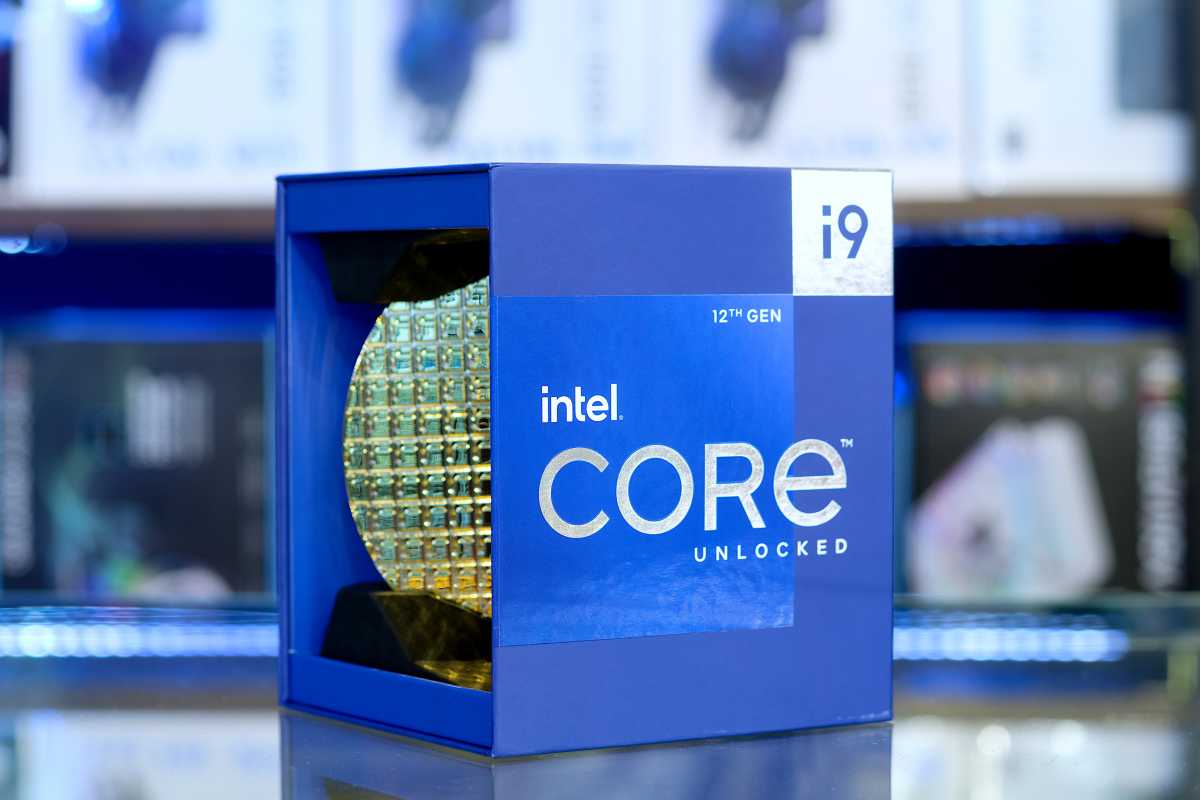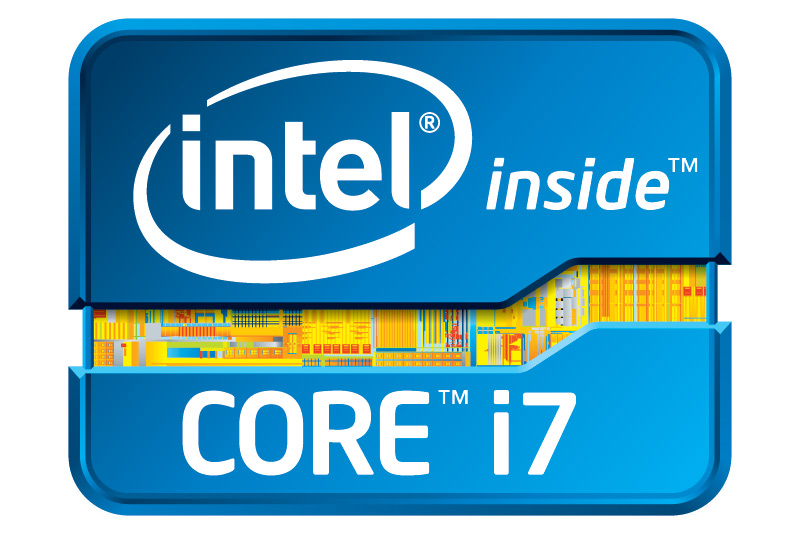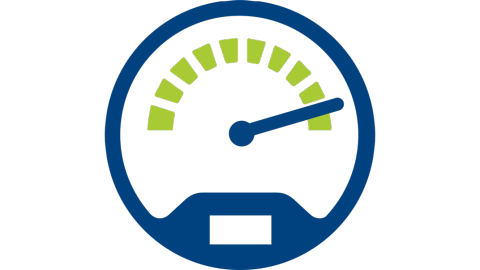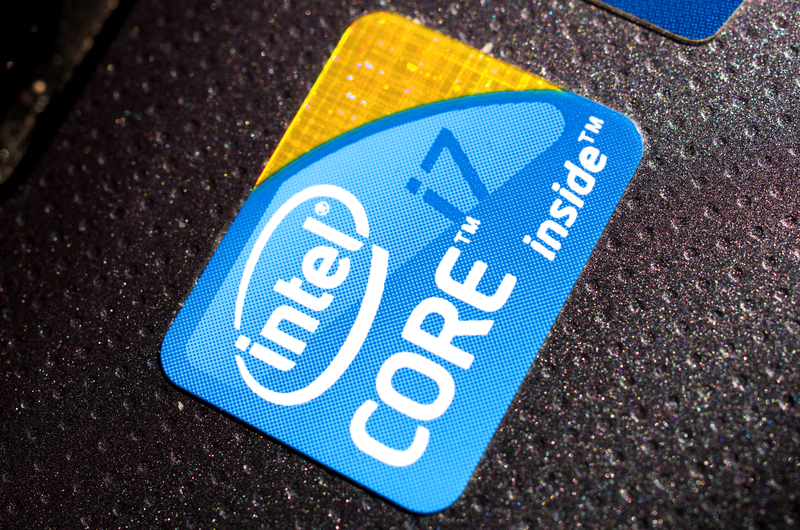
 Image: Dreamstime: Mnogomesta
Image: Dreamstime: Mnogomesta
Intel’s first Core processors made their debut in 2006. At this point, children born in the same year are almost old enough to drink. Over a dozen generations of Intel Core i3, Core i5, and Core i7 CPUs have come and gone since then but most consumers are still asking the same kinds of questions.
Intel Core i3, Core i5 or Core i7? What’s the difference? Is it worth it to own a CPU with more cores, a faster clock-speed or advanced features like hyper-threading?
Unless you’re looking to embrace AMD’s new Ryzen processors (Looking to learn which CPU is best: Intel Core i7 or AMD Ryzen?) you’re almost certainly going to have to make the choice between Intel’s three families of consumer-grade processors.
Core i3, Core i5, Core i7 — the difference in a nutshell
If you want to boil things down to something plain and simple, then generally speaking, “most” Core i7 CPUs are better than most Core i5 CPUs, which are in turn better than most Core i3 CPUs.
Below that, you’ve got fare like the Intel Celeron and Intel Pentium processors. We’re not going to go to deeply into those and how they compare to Intel’s Core processor, since this article is specifically focused on the difference between Intel’s Core i3, Core i5 and i7 CPUs – but they do merit a mention.

Dreamstime: Chiradech Chotchung
Dreamstime: Chiradech Chotchung
Dreamstime: Chiradech Chotchung
If you’re building your first PC, the main thing you need to keep in mind here is that the 3, 5 and 7 attached to each family of Intel Core processors are simply meant to be indicative of their relative processing power. They’ve got nothing to do with the number of cores in each CPU nor the speed of each. Intel’s Core i7 CPUs don’t have seven cores nor do Core i3 have three cores.
Which family an Intel Core CPU falls into is based on a collection of criteria involving their number of cores, clock speed (in GHz) and cache size. At the most basic level, these numbers reflect where each class of Intel Core CPU sit relative to one another and are intended to give consumers an idea of the kind of performance they should expect from each.
Essentially, the idea that Intel are looking to convey with this CPU classification system is that PC builders should expect:
An Intel Core i3 to provide adequate performance for basic tasksAn Intel Core i5 to provide good performance for most tasksAn Intel Core i7 to provide great performance for the most demanding of tasks
Since some older i7 CPUs might not out-perform more recent i5 CPUs, these designations shouldn’t always be taken as gospel but if you’re after a short and easy way to understand which processor is better, the numbers attached to each Intel Core family serve nicely.
Intel’s Core i3, i5 and i7 processors can also be grouped in terms of their target devices. Some are intended for us inside laptops, others are intended for use with desktop PCs. Wattage is the big differentiator here, since CPUs inside mobile devices generally have to make do with less power draw,
In some cases, the difference in specs and performance for the desktop and laptop variants of Intel’s i5 and i7 CPUs can be quite significant. However, to avoid confusion, let’s start by exclusively talking about the desktop variants.
Number of cores

Intel
Intel
Intel
While the number of cores inside an Intel Core CPU isn’t everything, the more cores there are, the more tasks (known as threads) can be served at the same time. This means that a PC with a higher core-count is going to be better for tasks where multithreading is important, such as web servers, web browsers and some video games.
While there isn’t a hard and fast rule around it, you’re also more likely to find less cores in a Core i3 than you are in a Core i5 or i7. This used to be just two cores, but more recently Core i3 processors with higher core counts have been released. For example, some 12th generation Intel Core i3 processors can have up to 10 cores.
The reason for this is that i3 processors are designed to hit a lower price-point more than they are push boundaries for performance. They tend to be found inside PCs that target a more budget-conscious market-segment where the need for a device to be affordable eclipses the demand for higher performance.
As you’d expect, Intel’s Core i5 processors tend to be more powerful than their i3 counterparts. Part of this comes down to faster average clock speeds. Part of this comes down to additional cores. More cores means these CPUs can handle more threads at once and faster clock speeds mean they can complete tasks more efficiently.
In years past, Intel’s Core i5 CPU line-up has generally been built around CPUs with up to four-cores. However, in recent times (like the 12th-Gen Alder Lake refresh), Intel have upped the ante to between 6-12 cores for many of their i5 CPUs. This includes processors like the Intel Core i5-12400, Intel Core i5-12600KF and Intel Core i5-12500.

Intel
Intel
Intel
Lastly, you’ve got Intel’s Core i7 CPUs. Again, you’re looking at both faster average clock speeds and additional cores. Intel’s Kaby Lake i7 Core CPUs included only four cores but the more modern Alder Lake family of i7 CPUs feature up to 16 cores and standard clock speeds that range go up to 5.00 Ghz.
At this point, you may be wondering just how important clock speeds are. The answer: pretty important. However, when it comes to clock speed, there are a few things you’ll want to keep in mind.
The first is that, in general, a higher clock speed is better. However, due to the thermal issues involved, processors with more cores tend to operate at a lower clock speed. Often-times, choosing a CPU involves choosing between a CPU capable of delivering faster clock-speeds or choosing one with more cores.
This brings us to the second thing you’ll want to keep in mind: faster might be better but it’s not always necessary. Although a faster core might be more efficient than a slower one, it might not necessarily be better for the tasks you want to use your computer to be better at.
Many applications only run single-threads while others are designed to utilize multiple. For cases where the latter applies, such as video rendering and gaming, having more cores is going to offer up an enormous improvement over having faster ones.
Rather than run out and drop the cash on the CPU with the fastest clock speed you can find, it might be worth thinking about what the clock speed you actually need looks like. To that end, it’s worth looking up the recommend system specifications for the game or software you’ll be running on your new PC.
For more everyday things like web browsing, an i5 processor with a higher clock speed is probably going to offer more bang for your buck than a beefier i7 might. Still, sometimes it’s more important to have those extra cores than an i5 or i7 CPU and often-times the choice between one Intel Core CPU and another will come down to whether you want to have a CPU with more cores or one with better clock speeds.
Are you building a PC that does the things you might do or are you happy to settle for one that can do the things you need it to do?
The other thing you’ll want to factor in here is that there’s an important difference between a CPUs standard clock speed and turbo clock speed. The former is the normal clock speed that an Intel CPU is able to deliver. The latter refers to the fastest speeds it can reach using Intel’s Turbo Boost features.
These sorts of technologies, found exclusively in Intel CPUs, are one of the key things that separate i3, i5 and i7 processors – since the more-affordable i3 CPU (plus some i5 CPUs) often don’t include them.
Intel Turbo Boost explained

Intel
Intel
Intel
Intel’s Turbo Boost feature allows a processor to dynamically increase its clock speed whenever the need arises. The maximum amount that Turbo Boost can raise clock speed at any given time is dependent on a number of factors. This includes the number of active cores, the estimated current consumption, the estimated power consumption and the overall processor temperature.
Using the Core i5-12600H as an example, its maximum allowable processor frequency is 4.5 GHz while its base clock speed is 3.30 GHz. A 12th-Gen Alder Lake i3 CPU like the Core i3-12300 has a higher base clock speed of 3.50 GHz but a lower max turbo frequency of 4.40 GHz.
Cache size

Intel
Intel
Intel
Another thing that sets Intel’s i3, i5 and i7 apart is cache size.
Both your computer’s RAM and its CPU cache serve as holding areas for frequently used data. Without them, the CPU would have to keep on relying on your hard disk drive for everything, which would slow everything down and cause even simple tasks to take a lot longer.
See, whenever a CPU finds that it keeps on using the same data over and over, it stores that data in its cache. A CPU’s Cache is just like RAM, only faster — since it’s built into the CPU itself. If RAM’s value as a component is billed around its ability to minimise interaction with your PC’s hard drive, the value of your CPU’s cache is that it minimises interaction with your PC’s RAM.
As you might be able to guess, a CPU with a larger cache allows for more data to be accessed faster. This is one major reason why an i7 outperforms an i5 — and why an i5 outperforms an i3.
What’s more, CPU cache sizes have grown significantly in recent years.
Intel’s 4th Gen Haswell Core i3 processors had either 3MB or 4MB of cache, Haswell Core i5s had either 4MB or 6MB of cache and Haswell Core i7 CPUs had a hefty 8MB of cache, except for the i7-4770R, which had only 6MB.
In contrast, Intel’s 12th-gen Alder Lake CPUs not only have more cache (for example, up to 12 GB in Intel 12-gen Core i3 processors), they also sport a new and improved cache type called Smart Cache.
Smart Cache makes caching more efficient by sharing the cache memory between the cores of the processor, which has the result of improving the overall performance and efficiency of the CPU.
Hyper-Threading

Supplied
Supplied
Supplied
Although the analogy isn’t perfect, Hyper-Threading is basically the equivalent of something like turbo-boost when it comes to increasing the power of your CPU’s cores.
In normal circumstances, only one thread can be served by one CPU core at a time. If a CPU is a dual-core, then supposedly only two threads can be served simultaneously. If your CPU has four cores, it can handle four threads at once. If your CPU has six cores….you get the idea.
Hyper-Threading changes this dynamic in a pretty significant way because it allows a single core to serve multiple threads at once through virtualisation.
For instance, a dual-core Core i3 with hyper-threading can serve two threads per core rather than the regular one per core. In other words, a total of four threads can run simultaneously and a quad-core Core i5 processor that doesn’t support Hyper-Threading is going to be about as capable as a dual-core Core i3 processor that does – at least when it comes to the number of threads it can handle at once.
This is one of the many reasons why Core i7 processors are the considered the crème de la crème when it comes to mainstream desktop processors. They boast more cores than i5 and i3 processors which has obvious Hyper-Threading benefits.
Intel’s Core i9 CPUs push this even further, by increasing the core-count even higher. For instance, Intel’s Alder Lake i9 CPUs go as high as 16-cores and 24-threads.
Which one should I get?
If you’re the kind of person who wants to buy or build a computer that’ll last, you have to ask yourself what you’re going to use it for.
If you do a lot of things at the same time on your PC, then it might be worth forking out the extra cash for an i7. Gamers in particular will want to opt for an i7, as it’s always better to sit closer to the recommended system requirements than its minimum system requirements. However, if you only use your PC to check emails, do some banking, read the news, and download a bit of music, you’re probably going to be OK with the cheaper i5 or i3.
The other deciding factor here should be whether or not the things you’re doing on your next PC are going to be things that can actually make use of technologies like Hyper-Threading. In other words, you need to look into and learn whether the applications and programs you use have any sort of multithread capability.
Many modern photo editors and video editing programs are multi-threaded, for example. However, there are no guarantees and taking the time to Google it for yourself could potentially save you money.
Hopefully this article has given you some insight for your next CPU selection and you now have a better idea of what the differences between Intel’s Core i3, Core i5 and Core i7 CPUs are.
Either way, happy computing!
This article was updated in 2022



